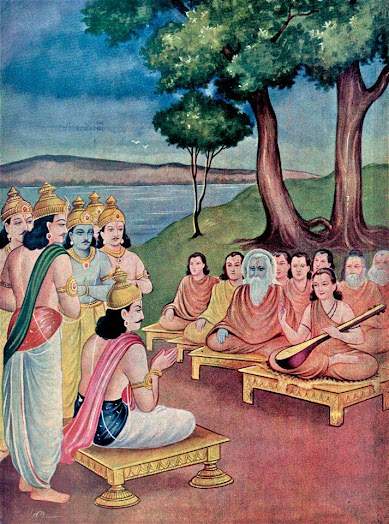Mahabharat('महाभारत') is one of the greatest epics of ancient India, and its tale has been retold for generations. The story of the Mahabharat is a rich tapestry of characters, emotions, and lessons, Saar (Summary), Learnings making it a valuable source of inspiration and wisdom for people of all ages. In this article, we will delve into the Mahabharat Saar (summary) of the full story and explore some of the key learnings that can be derived from it.
The Mahabharat('महाभारत')is a long and complex narrative that spans several generations and tells the story of two branches of the same royal family, the Kauravas and the Pandavas, who are locked in a bitter struggle for the throne of Hastinapur. The Pandavas, led by their eldest brother Yudhishthir, are depicted as virtuous and just, while the Kauravas, led by their eldest brother Duryodhan, are depicted as greedy and power-hungry. The conflict between the two branches of the family ultimately leads to a great battle, in which the Pandavas emerge victorious.
One of the key themes of The Mahabharat('महाभारत') is the importance of Dharma or righteousness. Throughout the epic, characters are faced with difficult moral dilemmas and must choose between what is right and what is easy. The Pandavas, for example, are faced with many challenges, including the loss of their kingdom and the unjust treatment of their mother, but they always choose to act with Dharma, even when it is not in their best interests. On the other hand, the Kauravas often choose to act out of greed and a desire for power, which ultimately leads to their downfall.
Another important theme of the Mahabharat('महाभारत') is the concept of karma. According to this belief, one's actions in this life determine one's fate in the next, and the Pandavas and Kauravas are prime examples of this principle. The Pandava's virtuous behavior and respect for Dharma bring them success and happiness, while the Kaurava's cruel and selfish actions lead to their downfall and misery.
The Mahabharat('महाभारत') is also full of lessons about the dangers of pride and anger. The Kauravas, driven by their pride and anger, refuse to listen to the wisdom of their elders and ultimately bring about their own destruction. On the other hand, the Pandavas can control their emotions and act with wisdom and compassion, even in the face of adversity.
The Mahabharat('महाभारत') is also rich in the depiction of complex relationships, including those between brothers, friends, and even enemies. The relationships between the Pandavas and Kauravas are prime examples of this, as they are torn apart by their conflicting desires and ambitions. The epic also explores the relationship between fathers and sons, as well as the bonds of loyalty and betrayal that exist between friends and allies.
The Mahabharat('महाभारत') is also a testament to the power of non-violence and the importance of seeking peace and reconciliation. Throughout the epic, the Pandavas make repeated efforts to avoid conflict and find a peaceful resolution to their differences with the Kauravas, but their efforts are repeatedly thwarted by the Kauravas's stubbornness and refusal to listen. In the end, however, it is the Pandava's commitment to non-violence and their unwavering belief in Dharma that allows them to emerge victorious in the great battle.
Finally, the Mahabharat('महाभारत') is a story about the triumph of good over evil, and the importance of perseverance and courage in the face of adversity. Despite all the odds against them
And a Most Valuable Thing We Got From Mahabharat('महाभारत'), Is 700 Sloks(Verses) Of Shrimad Bhagavad Gita.








